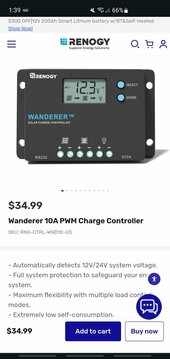Which meant that you were just charging one battery. Follow proper setup of your Renogy after disconnecting it entirely by PV first than battery. Reconnect your wires and than connect the SCC before connecting PV.I wasn't sure of the polarity because the manual says if 2 or more batteries are used you must jump from battery 1 negative to battery 2 positive so I connected the renogy to only the 1st battery
In the image below is series hookup. Your inverter and the SCC wires will hook up to the non jumpered terminals
Attachments
Last edited:




